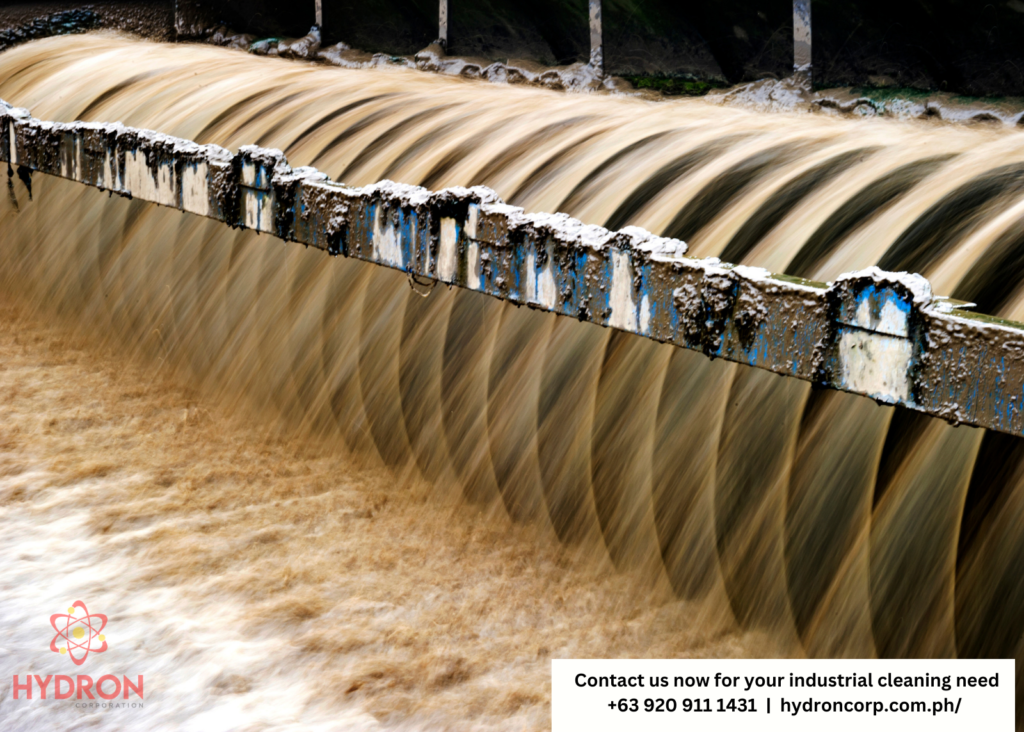Understanding WasteWater: A Simple Basic Guide
Wastewater may not be commonly discussed daily, but it significantly impacts our lives and the planet. Understanding the basics of wastewater is informative and essential for the well-being of our communities and the environment.
What Is Wastewater?
Wastewater is any water used in various human activities and has become contaminated. It includes water from our homes, businesses, and industries after using it for purposes like washing, flushing toilets, cooking, and industrial processes. This water becomes wastewater due to impurities, pollutants, and contaminants depending on its source and the activities it has come into contact with. Here are some specific examples of pollutants and contaminants commonly found in wastewater:
Organic Compounds:
- Biodegradable Organics: These include substances like food waste, fecal matter, and plant material.
- Non-Biodegradable Organics: Examples are synthetic chemicals, pharmaceuticals, and personal care products (e.g., pharmaceutical residue detergents).
Nutrients:
- Nitrogen Compounds: Such as ammonia (NH3), nitrate (NO3-), and nitrite (NO2-).
- Phosphorus Compounds: Typically found in detergents and fertilizers.
Heavy Metals:
- Lead (Pb), Mercury (Hg), Cadmium (Cd), and Chromium (Cr): These can come from industrial discharges, corrosion of pipes, and stormwater runoff.
- Arsenic (As): Found in some industrial processes and can leach from certain rocks and soils.
Pathogens:
- Bacteria (e.g., E. coli, Salmonella): Often originating from human and animal feces.
- Viruses (e.g., Hepatitis A, Norovirus): Also associated with fecal contamination.
- Protozoa (e.g., Giardia, Cryptosporidium): Microorganisms that can cause waterborne diseases.
Suspended Solids:
- Particulate Matter: Solid particles, including sand, silt, clay, and organic matter.
- Microplastics: Tiny plastic particles, often the result of the breakdown of larger plastic items.
Chemicals and Toxins:
- Pesticides and Herbicides: From agricultural runoff and landscaping activities.
- Industrial Chemicals: Various chemicals used in manufacturing processes.
- Pharmaceuticals and Personal Care Products (PPCPs): Residues from medications and hygiene products that enter the wastewater through human use.
Acids and Alkalis:
- Sulfuric Acid (H2SO4) and Hydrochloric Acid (HCl): From industrial processes.
- Caustic Soda (Sodium Hydroxide, NaOH): Used in various industries.
Oil and Grease:
- Petroleum Products: Including oil, gasoline, and lubricants.
- Animal and Vegetable Fats: From food processing and cooking.
Radioactive Substances:
- Radionuclides: Some industries produce wastewater with radioactive contaminants.
Heat:
- Thermal Pollution: Elevated temperatures in wastewater can harm aquatic ecosystems.
Dissolved Gases:
- Hydrogen Sulfide (H2S): A foul-smelling gas produced by the decomposition of organic matter.
Inorganic Salts:
- Chlorides, Sulfates, and Nitrates: These can come from various sources, including road salt and fertilizers.
It’s important to note that the composition of wastewater can vary significantly based on the source and location. Adequate wastewater treatment methods are designed to target and remove these specific contaminants to ensure the water is safe for release into the environment or reuse.

The Sources of Wastewater
- Domestic Wastewater: This type of wastewater originates from households and includes water from sinks, showers, toilets, and appliances like washing machines and dishwashers. It’s often referred to as “sewage.”
- Industrial Wastewater: Industries generate wastewater during their manufacturing and production processes. Depending on the industry, this wastewater can contain various pollutants, such as chemicals, heavy metals, and organic compounds.
- Commercial Wastewater: Businesses like restaurants, hotels, and shopping centers produce wastewater from food preparation, cleaning, and sanitation.
- Agricultural Wastewater: Agriculture generates wastewater from irrigation, livestock operations, fertilizers, and pesticides.
- Stormwater Runoff: Rainwater that flows over streets, parking lots, and other surfaces can pick up contaminants and become part of the wastewater stream.
Why Does Wastewater Need Treatment?
Wastewater needs to be treated for several important reasons:
Protecting Public Health
When wastewater is not properly treated, it carries a high risk to human health due to harmful microorganisms, bacteria, and viruses. It can contaminate water sources and spread waterborne diseases if released into the environment without proper treatment.
Environmental Conservation
Wastewater contains various pollutants, including nutrients, heavy metals, and chemicals, which can harm aquatic ecosystems and wildlife when discharged into rivers, lakes, or oceans. Treating wastewater helps prevent ecological damage and preserves our natural environment.
Regulatory Compliance
Local and national governments have regulations to ensure that wastewater is correctly treated before being discharged into the environment. Compliance with these regulations is mandatory and helps maintain a safe and clean environment.
Water Reuse
In many regions with limited water resources, treated wastewater can be reclaimed and reused for non-potable purposes such as irrigation, industrial processes, and cooling systems. Proper treatment is essential to ensure the quality of reclaimed water.
Resource Recovery
Wastewater can contain valuable resources such as energy (biogas from anaerobic digestion), nutrients (phosphorus and nitrogen), and clean water. Treatment processes can recover and reuse these resources, making wastewater treatment more sustainable.
The Wastewater Treatment Process
Wastewater treatment involves a series of physical, chemical, and biological processes designed to remove contaminants and pollutants from wastewater. The primary goal is to produce treated water that meets regulatory standards and is safe for discharge into the environment or reuse. Here are the typical stages of the wastewater treatment process:
- Preliminary Treatment
This stage involves the removal of large debris, such as sticks, leaves, and plastic, as well as grit and sand. It helps protect downstream equipment from damage and prepares the wastewater for further treatment.
2. Primary Treatment
For the first treatment, wastewater is held during primary treatment in settling tanks where heavier solids settle to the bottom as sludge. The lighter materials float to the top as scum. The clarified water in the middle undergoes further treatment.
3. Secondary Treatment
Secondary treatment focuses on the biological removal of organic matter from wastewater. Microorganisms are introduced to break down pollutants further. Standard methods include activated sludge and trickling filters.
4. Tertiary Treatment
Tertiary treatment aims to further purify the water. It removes nutrients, fine solids, and any remaining contaminants. Advanced processes like filtration and chemical treatment may be employed.
5. Disinfection
Disinfection is the final step, where any remaining pathogens (bacteria, viruses) are eliminated to ensure the treated water is safe for release or reuse. Standard disinfection methods include chlorination, ultraviolet (UV) disinfection, and ozone treatment.
Wastewater is an integral part of our daily lives, and understanding its importance is crucial for the health of our communities and the environment. Proper treatment protects public health and the environment and allows for resource recovery and water reuse, contributing to a more sustainable future.
